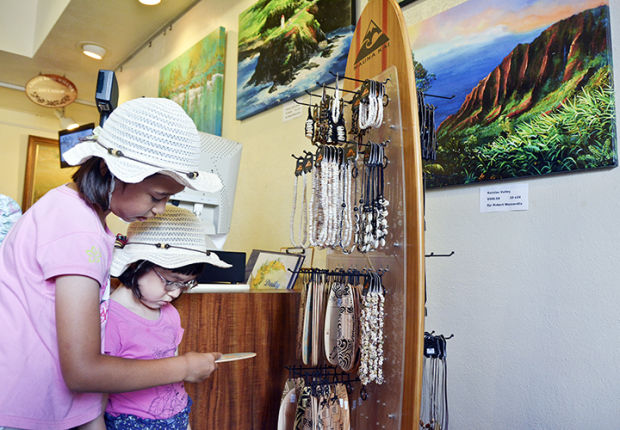Hawaii’s tourism economy is on pace with last year’s record-breaking year in spending and arrivals, but Kauai saw fewer visitors and spending in June. The Hawaii Tourism Authority reported Monday that during the first half of 2014, visitor expenditures contributed
Hawaii’s tourism economy is on pace with last year’s record-breaking year in spending and arrivals, but Kauai saw fewer visitors and spending in June.
The Hawaii Tourism Authority reported Monday that during the first half of 2014, visitor expenditures contributed $178 million more into the state’s economy compared to last year, which represents $7.4 billion in total expenditures or $19 million in state tax revenue.
During the first six months of the year, visitors spent an average of $40.2 million statewide per day, $19.3 million on Oahu, $11.4 million on Maui, $4.1 million on Kauai and $5.4 million on Hawaii Island.
“Despite these gains, we are cognizant of changing trends in visitor length of stay and spending. Visitors are exercising more caution in keeping within their budget threshold as the cost of a Hawaiian vacation increases, competition from alternative destinations grows and the U.S. dollar becomes stronger against foreign currencies,” said Mike McCartney, president and CEO of HTA.
Visitors who came to Hawaii in June 2014 spent a total of $1.3 billion (+0.3 percent), comparable to June 2013, while total arrivals rose 1.9 percent to 725,066 visitors, according to preliminary statistics released by HTA.
Kauai saw a decline in arrivals (-1.8 percent to 103, 623 visitors) and daily spending (-1.9 percent to $160 per person), which resulted in $128.4 million in visitor expenditures, down 2.1 percent compared to June 2013.
Growth in Japanese arrivals to Hawaii rose 7 percent to 126,357 visitors, but was offset by decreases in length of stay (-2.5 percent to 5.76 days) and daily spending (-4.6 percent to $283 per person), resulting in total visitor expenditures of $205.8 million (-0.5 percent).
McCartney said he anticipates a bump in air seats from North America in the latter half of the year, specifically out of Los Angeles and Seattle. Increased competition within these major hubs, along with the redeployment of aircrafts previously used for international routes to service domestic routes are contributing to the increase in air seats, he said. However, more visitors are now booking travel within a shorter timeframe (from three to six months to 30 days), which causes more uncertainty in forecasting the second half of the year.
He said HTA is looking forward to its upcoming Hawaii Tourism Conference on Aug. 28 and 29.
“Maintaining the momentum that Hawaii’s tourism economy experienced last year will be a priority for us as we look to the latter half of 2014 and 2015,” McCartney said.


